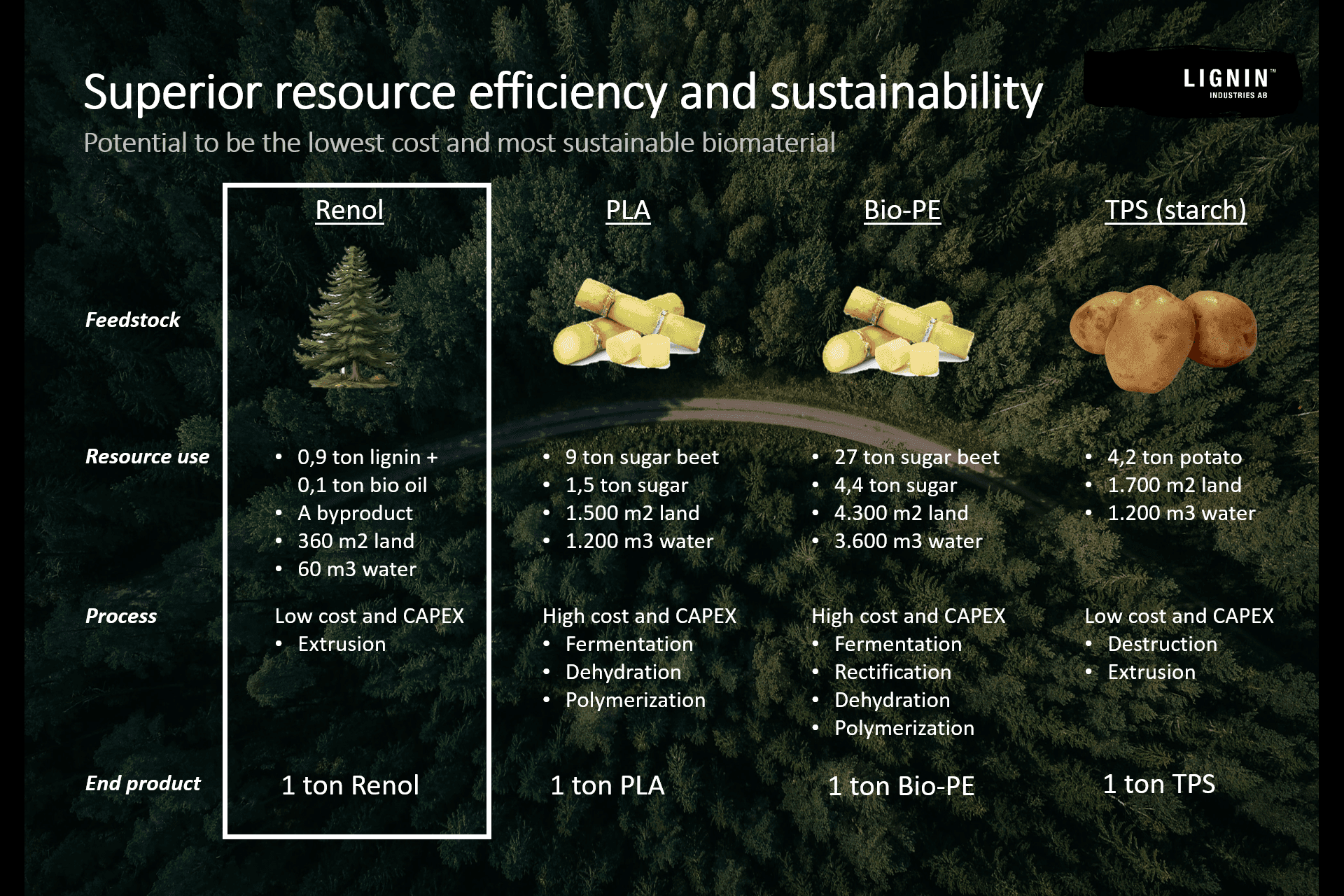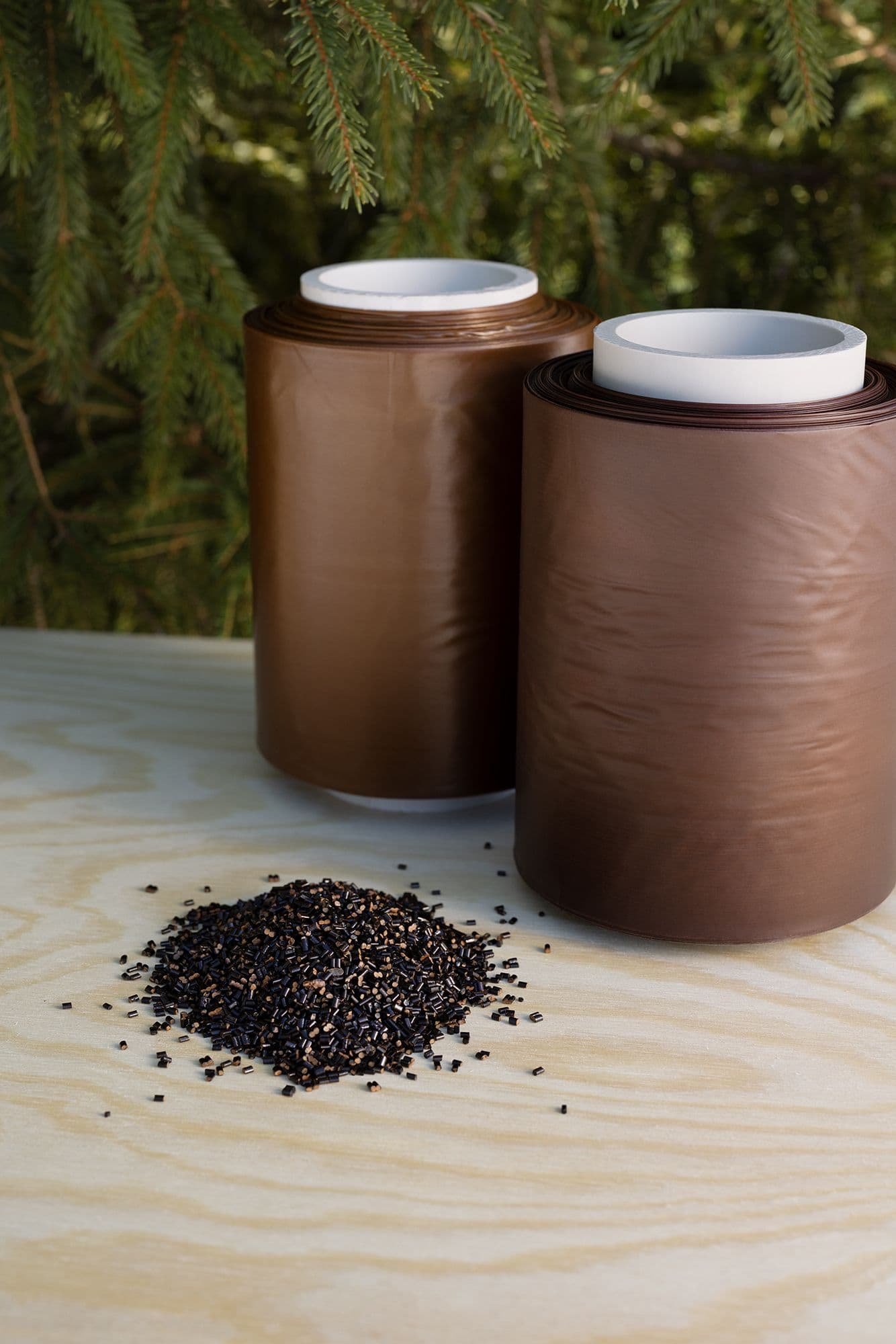How can lignin be a good material for plastic application?
Lignin has historically been used in trials as a replacement for fossil-based plastics with very limited/no success. So, Lignin in itself is not the solution. Our solution reacts Lignin with a bio-oil, creating a thermoplastic polymer (~90% Lignin/10% bio-oil). This material (Renol) has so far been proven in PE, ABS, and PP applications with good results. Using our Renol in combination with recycled plastics gives the possibility to deliver net-zero plastics to both the consumer market and industrial plastics applications.
Using Lignin as a base means valorizing one of the most abundant polymers on earth. Lignin is available in kraft pulping, soda pulping, biorefinery, and other industries, and we estimate that substantially more than 100 million tons are available annually, out of which 80 million comes from kraft pulping.
How does lignin-based Renol compare to traditional plastics in terms of performance and environmental impact?
Our Renol has an LCA of -1,9 kg CO2 equiv./kg — verified through third-party analysis based on ISO standards. It provides similar performance as normal plastics if used as drop-in material at levels <25-30%. We have produced PE films with solid properties, ABS with solid impact strength, and PP as well.
On top of these things, our Renol improves the recyclability of PE/PP/ABS when recycled by halting the degradation process. Lignin, as such, degrades as wood and provides natural thermo-resistant properties as well as UV protection.

What other applications do you envision for lignin-based plastics?
Mid to long term, we are scanning broader applications within the plastic universe. Until now, our products do not have food contact approval. We have not applied for it because our main focus is on industrial plastics. However, that could be one way to go. Currently, we are mainly working with applications that have existing recycling streams. Over time, we envision ourselves going into plastics that are worse for the climate and cannot be recycled to reduce their pollutive impact.
Are there plans to explore other bio-based alternative raw materials?
Not for us as a core model. However, we are actively supporting other bio-materials and hope to be able to collaborate broadly to completely replace oil as a raw material for plastics. We are not a competitor to other biomaterials; we are competing against fossil-based raw materials.
How does the cost of producing lignin-based plastics compare to conventional plastics, and how might this influence market adoption?
We are a bit more expensive than traditional bulk-type plastics. Depending on the application, the price difference ranges between 10% and 30%. However, we are cheaper and will be able to produce larger volumes long-term than other currently available bioplastics. We foresee the cost of emitting CO2 going up, but our case isn’t built on it. When this happens, we think that switching to Renol will be near cost-neutral.

How are you approaching the challenge of encouraging consumer and industry adoption of lignin-based plastics?
We are working with two approaches right now. We are currently launching net-zero eCom plastic bags. Those are first being sold as a finished product from us to brand owner companies in the fashion industry. This approach is to prove to a rather cautious plastic industry that brands need bio-based options, and they are willing to pay a premium.
The second approach is more traditional. We work with compounders and/or converters to provide master batches of our material that are then being mixed into different end applications. The latter approach is slower than the first one but is likely to yield larger volumes over time.
How do you sustainably source lignin from wood and grass without impacting the environment or competing with food crops?
The Lignin is there. We don’t need to harvest more. We just have to make sure it is not burnt for a very low energy value and instead used as a higher-value input into bio-plastics. There will be no need to use land for farming materials that are supposed to provide us with more lignin. The over 100 mio tons available annually are enough. We are truly resource-efficient in the way we develop our Renol.








